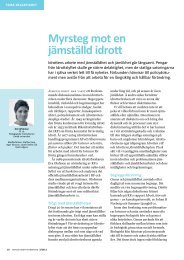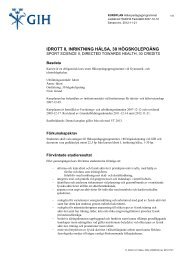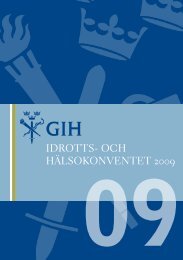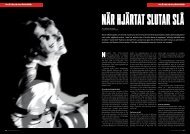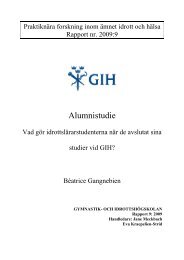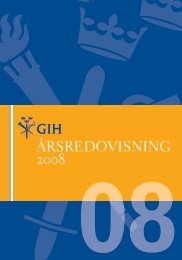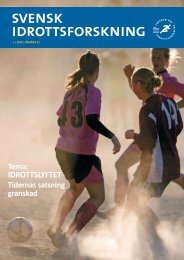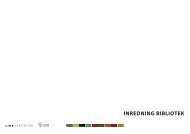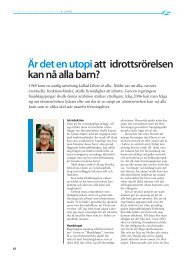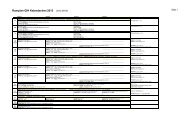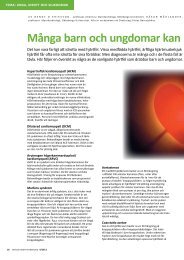Programme and abstracts - GIH
Programme and abstracts - GIH
Programme and abstracts - GIH
You also want an ePaper? Increase the reach of your titles
YUMPU automatically turns print PDFs into web optimized ePapers that Google loves.
Abstract:Children's (lack of) experience within nature is a field getting increased attention amongresearchers in Western Societies. Several studies suggest that children in natural environmentdevelop more creative forms of play in natural surroundings than in built spaces, while othersemphasize the role of risky play as the driving forces in children's outdoor play. Inspired bytheories of Bildung (dannelse) an alternative approach appears, emphasizing the significanceof curiosity as the driving force in children's play. Inspired by recent work of Peter Becker, thispaper will discuss <strong>and</strong> seek to further develop the implications of dannelse by linking thisperspective with an ego-anthropological approach, that interpret children’s lived playexperienceas a dwelling in the world. This play within the natural elements is recognized as asensuous exploration of their embodied abilities, <strong>and</strong> qualities of the physical, social <strong>and</strong>cultural surroundings in which they are a part of – in ways that appear to be unknown, exciting<strong>and</strong> meaningful for the children (S<strong>and</strong>erud & Gurholt, subm). Towards this theoreticalframework, the presentation intends to explore a design to research the significance of urbanoutdoor areas such as parks, school yards <strong>and</strong> kindergartens in children's upbringing.Title:Outdoor Education- alternative way to integrate excluded youthAuthor/s:Jari Kujala, Department of Social Service <strong>and</strong> Health Care, Finl<strong>and</strong>.Abstract:Alternative method of Outdoor Education in the context of City Social <strong>and</strong> child protectionwork is not mainstream on the work done with youth at risk - but it works. Malmigroup hasworked for fifteen years in the North of Helsinki, Finl<strong>and</strong> to prevent these risk groups (age11 - 17 years) to drop out from society. Aim of this presentation is to study the differencesbetween city- <strong>and</strong> nature spaces we call in Finish tradition elo (by the house activities)<strong>and</strong> erä (wildernes activites). The methods of work between spaces of urban nature <strong>and</strong>wilderness are explored through social work cases during our work history.The presentation consist of four different approaches. 1. The motivation 2. TheExpectations 3. Participation <strong>and</strong> 4. The evaluation1. The motivation is on the meanings of socio-spatial context of relationships <strong>and</strong>topography. From suburbans to open spaces. From attachment to strangeness.Internal <strong>and</strong> external motivations can be seen from the perspective of developingidentities <strong>and</strong> these can be practiced in adventurous settings.2. The expectations are about the subjectivity <strong>and</strong> empowerment, resources <strong>and</strong>recognizing of the needs. The main questions of these are: How socially excluded aresubjects <strong>and</strong> in witch contexts? How do they perceive <strong>and</strong> see the things? To find outthis we need to know about their individual history <strong>and</strong> the disqualified knowledge.3. The social participation is of the use of elemental nature <strong>and</strong> the naturalenvironment. People act differently in different settings. The place <strong>and</strong> the timeconcepts are essential parts of hermeneutics. This defines the frames ofcommunication <strong>and</strong> participation.4. The evaluation is about the effects of the work done. It deals with the, motivations asindividual risk factors, expectations as societal goals <strong>and</strong> participation as resilience ofa local community. It puts together the suburbans youth criminality rates <strong>and</strong> individualskills of learning. The emphasis is on ecological framework on systems of influence.24




